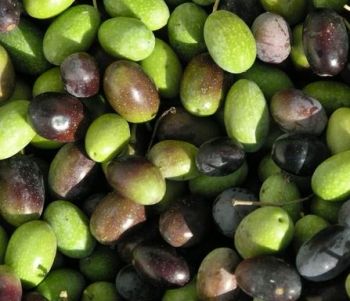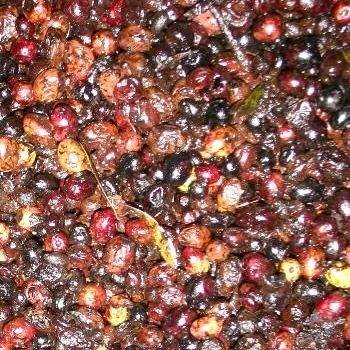Before we go into the really interesting stuff, in this post I want to go into a little more detail on what the difference is between the different categories of olive oil. Even the Spanish and the Italians get confused and are ignorant to the fact that there are so many categories, let alone what they mean. However when you are buying olive oil particularly for health reasons over other oils this the first thing that one should understand. What am I buying? Obviously I am assuming that the seller is being honest and not committing fraud, as has been the case with some supermarket chains, amongst them Alcampo / Auchan (tell you about that one later!).
So, when we refer to “olive oils” we are referring to oils obtained solely from the fruit of the olive tree, to the exclusion of oils using solvents or re-esterification and are not mixed with oils of other kinds, such as walnut oil (an Italian trick!). The group category includes; virgin olive oils, refined olive oils, and not the least confusing, olive oil (which is a combination of virgin and refined olive oil).
.jpeg)
Virgin Olive Oils
All virgin olive oils are obtained only from the olive, the fruit of the olive tree, using solely mechanical or other physical means, in conditions, particularly thermal conditions, which do not alter the oil in any way usually conditions below 30ºC. They have not undergone any treatment other than washing, decanting, centrifuging, and filtering. This excludes oils obtained by the use of solvents or re-esterification methods, and those mixed with oils from other sources, hence the word “Virgin” is used.
Virgin olive oils can be qualified as a natural product, and can have a designation of origin when they meet the specific characteristics associated with a particular region. Virgin olive oils can have four different designations depending on their organoleptic (taste and aroma) and analytic characteristics (the degree of acidity refers to the proportion of free fatty acids not to the taste). Those that are fit for consumption as they are, include extra virgin, virgin, and ordinary virgin. The fourth class is the lampante olive oil, which is not fit for consumption as it is. It is called “lampante” since Roman times as they used this oil as lamp oil for burning.
Virgin Olive Oils Fit For Consumption As They Are:
Extra Virgin Olive Oil
This is a virgin olive oil that has a free acidity, expressed as oleic acid, of no more than 0.8 grams per 100 grams (0.8%), and whose other characteristics correspond to those fixed for this category by the International Olive Oil Council (IOOC standards). Extra virgin olive oil accounts for less than 10% of oil in many producing countries, so you can imagine what most people are consuming and more than likely, think they are consuming something else. This is the highest quality of olive oil and really if we are serious about olive oil it should be the only type we use. Note that extra virgin olive oils vary widely in taste, colour, and appearance. Their taste and aroma should reflect the fact that they were made from olives and have some positive attributes (that is, they cannot be totally tasteless). They are supposed to have no taste defects. I’ll go into taste and attributes on another post.
Virgin Olive Oil
Virgin olive oil that has a free acidity, expressed as oleic acid, of not more than 2 grams per 100 grams (2.0%), and whose other characteristics correspond to those fixed for this category in the IOOC standards. Their quality is lower than extra virgin olive oils’. So you’ve probably realised that the lower the free acidity the better.

(These are good olives and if processed quickly should give a good oil)
Ordinary Virgin Olive
Virgin olive oil that has a free acidity, expressed as oleic acid, of not more than 3.3 grams per 100 grams (3.3%), and whose other characteristics correspond to those fixed for this category in the IOOC standards. This is an inferior oil with notable defects, whose classification might soon be changed to lampante olive oil by the IOOC. The EU has already eliminated this category, but other countries are still using it.
Lampante Virgin Olive Oil (Not Fit For Consumption As It Is)
Virgin olive oil that has a free acidity, expressed as oleic acid, of more than 3.3 grams per 100 grams (3.3%) and/or organoleptic and other characteristics corresponding to those fixed for this category in the IOOC standards. It is intended for refining or for technical use. These oils come from bad fruit or careless processing.

.jpg)
(These are very bad olives that have been sitting around for some time waiting to be processed.
Naturally nothing goes to waste in this business!)
Refined Olive Oil
Refined olive oil is the olive oil obtained from virgin olive oils by refining methods that do not lead to alterations in the initial glyceridic structure. It has a free acidity, of no more than 0.3 grams per 100 grams (0.3%) and its other characteristics correspond to those fixed for this category in the IOOC standards.
This oil is obtained by refining virgin olive oils (not olive-pomace oils) that have a high acidity level and/or organoleptic defects, which are eliminated after refining. Over 50% of the oil produced in the Mediterranean area is of such poor quality that it must be refined to produce an edible product. Note that no solvents have been used to extract the oil, but it has been refined with the use of charcoal and other chemical and physical filters. An obsolete equivalent is "pure olive oil”. Refined oil is generally tasteless, odourless, and colourless. Many countries deem it unfit for human consumption due to poor flavour, not due to safety concerns. However, it is not officially described as “not fit for human consumption as it is” in the IOOC definitions, but I have my doubts.
Olive Oil
Olive oil is the oil consisting of a blend of refined olive oil and virgin olive oil fit for consumption as they are. It has a free acidity, expressed as oleic acid, of not more than 1 gram per 100 grams (1.0%). The cheap refined oil is mixed with more flavourful virgin oil. Some countries require a more specific designation. Most of the olive oil sold in the world falls into this category. Different blends are made, with more or less virgin oil, to achieve different tastes at different prices. Oils described as “Light” or “Extra Light” fall in this category, and are most likely made with a large proportion of refined oil. The chances are that at it’s best it will only have 20% virgin oil.
OLIVE-POMACE OILS
Pomace is the ground flesh and pits left after pressing. Olive-pomace oil is the oil obtained by treating olive pomace with solvents or other physical treatments, to the exclusion of oils obtained by re-esterification processes and of any mixture with oils of other kinds. It is considered an inferior grade and is used for soap making or industrial purposes such as skin products, frying crisps etc.
Crude Olive-Pomace Oil
Crude olive-pomace oil is olive-pomace oil whose characteristics correspond to those fixed for this category in the IOOC standards. It is intended for refining for use for human consumption, or for technical use. It is not really fit for human consumption as it is.
Refined Olive-Pomace Oil
Refined olive-pomace oil is the oil obtained from crude olive-pomace oil by refining methods that do not lead to alterations in the initial glyceridic structure. It has a free acidity, expressed as oleic acid, of not more than 0.3 grams per 100 grams and its other characteristics correspond to those fixed for this category in the IOOC standards. It is generally refined by the same methods as Refined Olive Oil, except that the raw product is crude olive-pomace oil instead of low quality virgin oil. It is not considered fit for human consumption in many countries because of flavour considerations.
Olive-Pomace Oil
Olive pomace oil is the oil comprising the blend of refined olive-pomace oil and virgin olive oil fit for consumption as they are. It has a free acidity of no more than 1 gram per 100 grams (1%) and its other characteristics correspond to those fixed for this category in the IOOC standards. In no case shall this blend be called “olive oil”.
So there you have it. I bet you are even more confused than when we started. Well, to cut a long story short, what we all want at the end of the day is Virgin or Extra virgin olive oil, but we can’t all afford it, hence the rest of the inventions. If you can choose, always go for extra virgin olive oil. You will see many articles and many posts on blogs that some of the olive oils are better for salads and some are better for frying food such as “Olive Oil” (refined and virgin mixed) as they advertise a higher smoking point. This is true in general, the lower grade olive oils do have a higher smoking point, but that’s the problem, they are lower grade and offer no real benefits to the consumer. The higher smoking point is achieved by refining the oil and people see it as a substitute for sunflower oil. However it is perfectly possible to use extra virgin olive oil for frying and cooking contrary to general opinion, as it is generally considered too precious to waste on that and is only used for salads or drizzling over meat and fish. It is not necessary to spend a fortune on extra virgin olive oil but if it is a good extra virgin you will only need to use 50% of the volume you would normally use with sunflower oil or refined olive oil, as a good extra virgin expands with the heat much more than other oils. So if you look at it from this perspective it’s just as cheap. It is also important to choose the right variety of olive as certain varieties have higher smoking points than others and are more adequate for cooking where as others are more adequate for eating raw. This is another topic I will be discussing further on, which variety is best for each occasion. So, now we have narrowed the selection down to one category, what do we look for now? I’ll be answering that in my next post: How to recognise an authentic Extra Virgin Olive Oil.